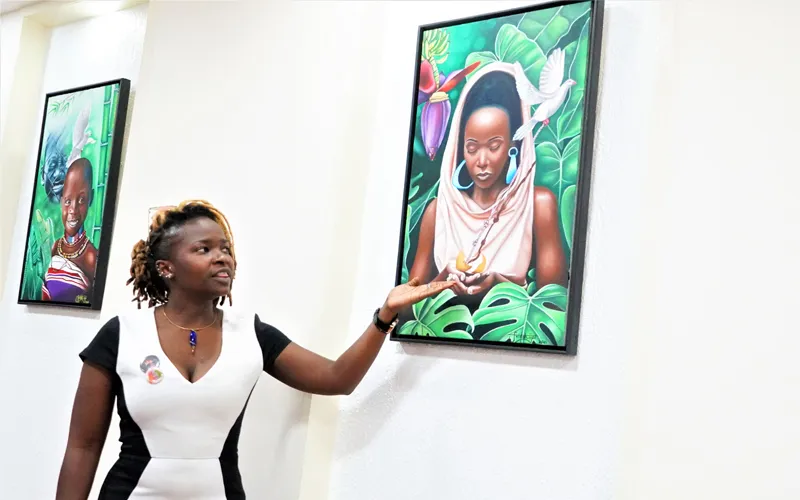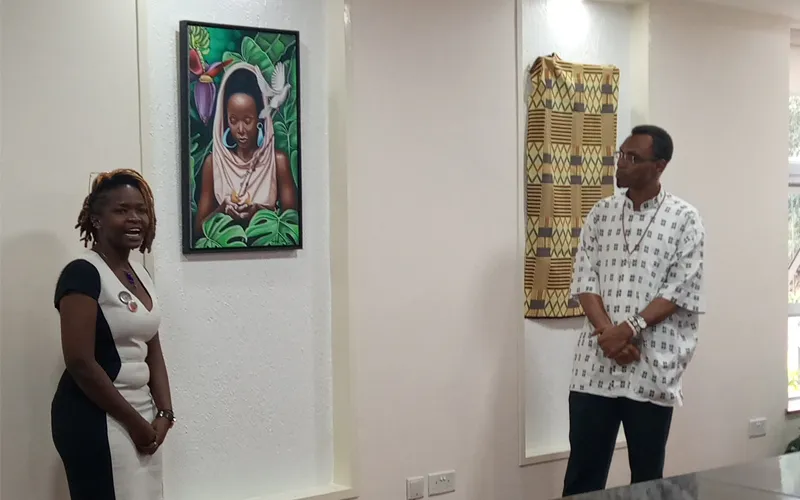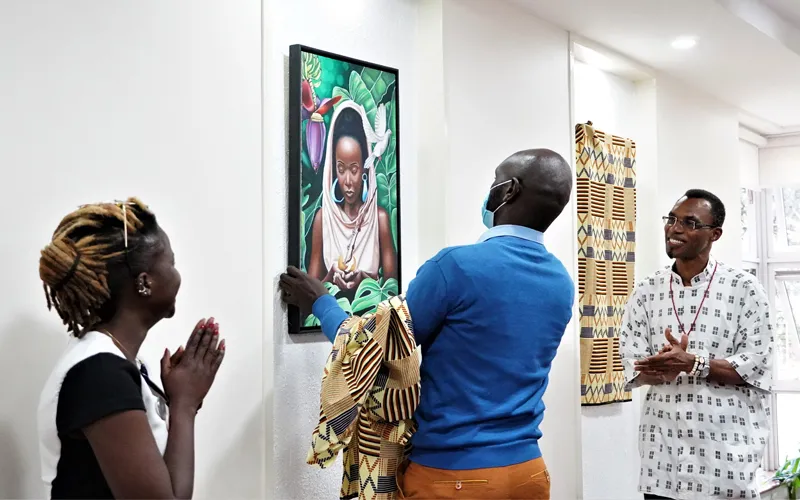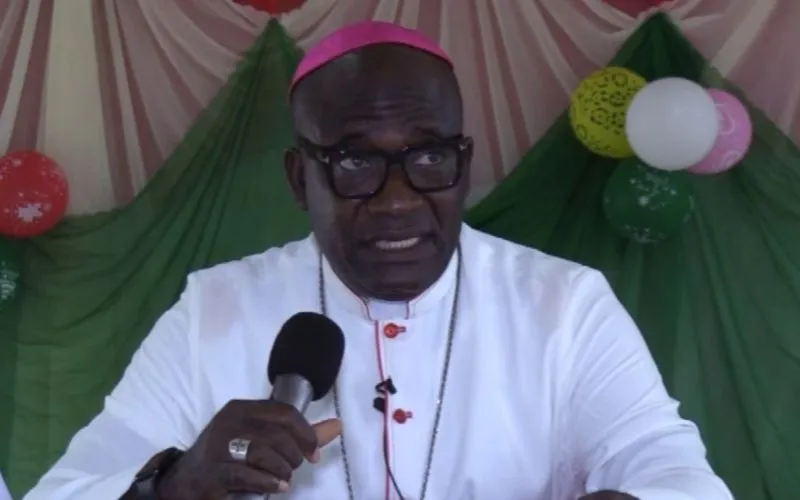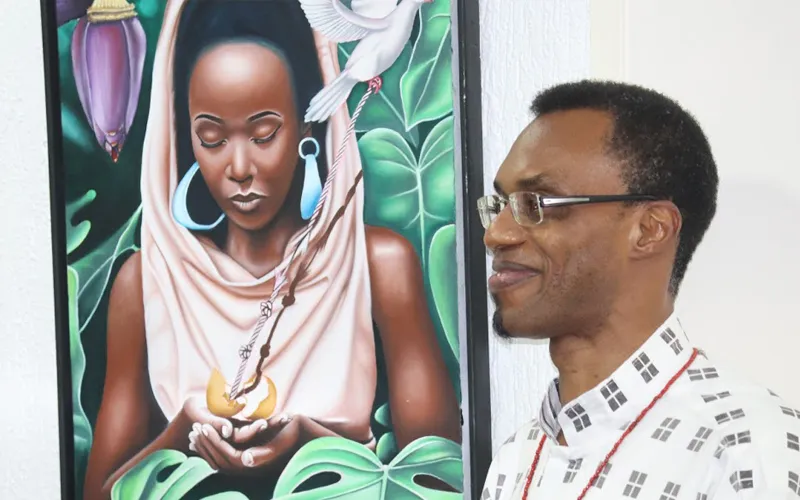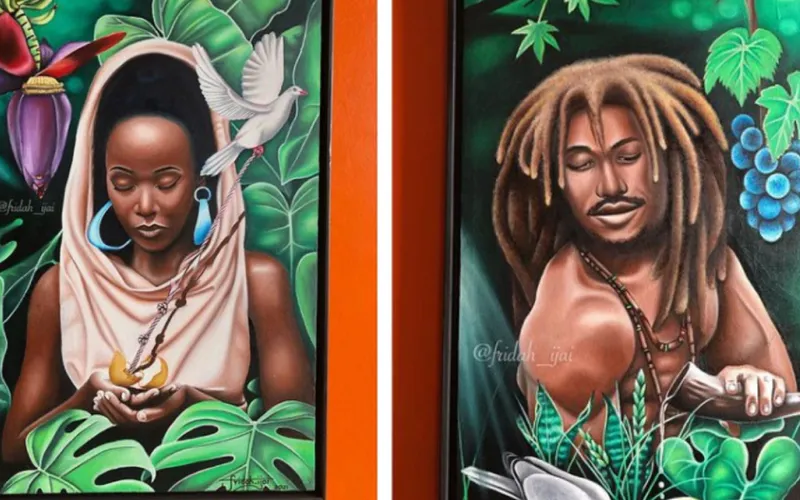“We are God's work of art. This means that God is the ultimate artist. In fact, God is referred to as the Artist in Chief in many African societies,” Fr. Orobator said, and added, “God creates with patience and love and He invests Himself in what he is creating. We are celebrating today what we are called to do; to be co-creators with God. To imitate him and to present a world colored with God's grace.”
He said that the Jesuits’ engagement with Ijai has been lengthy, with the artist presenting sketches and receiving corrections from the Priests until the grand unveiling on June 11.
The two other paintings that were commissioned at the Jesuits’ Africama House in Nairobi were the “New Adam” and the “African Child.” The two pieces are also inspired by the creation story.
Ijai refers to the New Adam painting as “Who do you think I am?”

(Story continues below)
“My idea was to create an African Adam in the garden of Eden (Africa) who in turn reincarnates as Jesus in the New Testament,” the artist says, and adds, “In this painting, I’ve brought in the aspect of Jesus in the water since Jesus is the water of life.”
The “Adam” painting has been interpreted differently, with some likening the man in the photo who is presented alongside a dove and water to John the Baptist. Still, others see a Rastafarian religion/culture and the dreadlocks in this case being a symbol of the lion of Judah.
“Everyone has their own opinion and I love when people can think through and enjoy my paintings. That’s why I named the painting ‘Who Do You Think I Am,’” she says.

Fr. John Baptist Anyeh, a Jesuit Priest who was present at the unveiling ceremony looked at the “New Adam” as the hope for humanity which he said was plunged in deep turmoil with the disobedience of the first parents.
“The old Adam didn't have the capacity to pull humanity out of suffering but the new Adam, Jesus, has power to save humanity,” Fr. John Baptist said.

The final depiction of a vibrant Africa Child is aimed at telling Africa’s beauty and correcting deep held beliefs that Africa is a land of suffering, Ijai tells ACI Africa.
The painting depicts two children separated by a wire mesh. One of the children who wears a broad smile is painted in bright African colours and is surrounded by green vegetation. The other one is painted in black and white.
“I paint the child in white and black to represent what should be Africa’s past. There has always been the assumption that Africa is in pain and suffering. I have seen images of African children in dirty clothes, crying. This is our past. We want to portray Africa as a beautiful continent and happy continent,” Ijai says.
Agnes Aineah is a Kenyan journalist with a background in digital and newspaper reporting. She holds a Master of Arts in Digital Journalism from the Aga Khan University, Graduate School of Media and Communications and a Bachelor's Degree in Linguistics, Media and Communications from Kenya's Moi University. Agnes currently serves as a journalist for ACI Africa.
